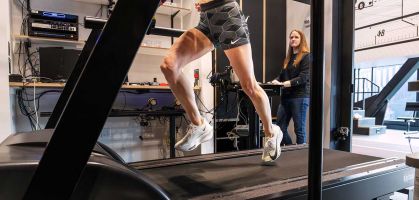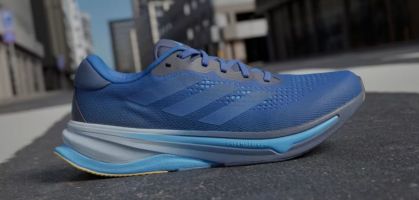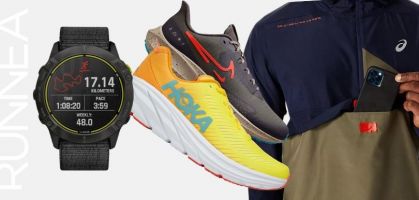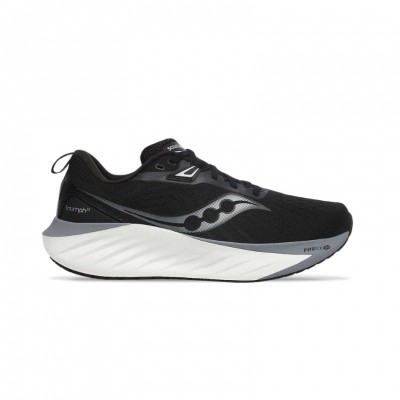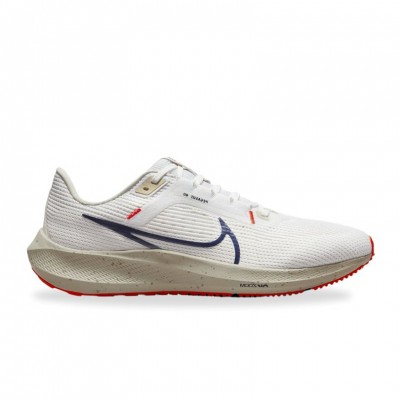The trail is in fashion. There is no doubt about it. Of all the outdoor activities, it is the one that has grown exponentially in recent years. Not even the most optimistic of trail runners, who at the beginning of the 2000s received those incredulous looks from hikers, could have imagined that trail running would gain such a large number of followers and fans.
In my experience it is something natural: whoever tries it, repeats. And if you enjoy running and you have already investigated and run on all the roads and tracks that surround your city, my advice is to take the leap to the mountains. Running away from the asphalt, surrounded by nature, scanning in your retina every picture that the road offers you, more than your favorite sporting activity, ends up being your lifestyle.
This "boom" has also been noticed in the development and commercialization of more and more products and specific material surrounding trail running.
First of all, the shoes
If you are a runner, you will already know that without a doubt, the FIRST material NEED will be a pair of shoes. In addition to being suitable for your characteristics and needs (type of footprint, weight, cushioning needs,...) they must be trail-specific (greater support and protection, more aggressive cushioning,...) Nowadays, in addition to the typical commercial brands of mountain equipmentSalomon, La Sportiva, Lafuma,...) the rest of the traditional running shoe manufacturers have been innovating in their trail lineMizuno, Asics, New Balance,...).
You may be interested in: Trail Running Shoe Price Comparator.
The SECOND NECESSITY will be the clothing. Although standard running equipment (adapted to the environmental conditions) can be adapted to trail running, special attention should be paid to those garments that protect us from the external atmospheric agents that we will encounter in the mountains. In this sense, investing in a reliable, lightweight, but above all breathable windbreaker and a jacket with a microporous membrane that ensures waterproofing and breathability will allow us to enjoy our activity more and, more importantly, to protect our safety in an often hostile environment.
When you already have your shoes and clothing, it is because you are getting hooked on the activity. You want to broaden your horizons and go on longer and more demanding routes. And this is the moment when you have the most doubts. Especially when it comes to buying a hydration backpack. In my opinion the NEXT IMPORTANT DECISION.
You may be interested in: Trail running backpacks: Which one to buy for mountain running?
The first question you will have to ask yourself is what do I need it for, what are my needs?
The answer is that you need a backpack when you need to hydrate and feed yourself due to the duration, intensity, level of perspiration of the activity, and when you need to adapt your equipment and clothing due to the environmental conditions or the slope to be overcome.
Regarding the DURATION AND INTENSITY of the activity. For outings of between an hour and a half and two hours, as long as you do not have to adapt and transport other types of material or clothing, my advice is that the best option is the fanny packs. Remember that hydration before the activity is as important as hydration during the activity.
A good pre-activity hydration will ensure a good performance and lower the need to rehydrate during the activity. Even for a trained person with good pre-activity hydration (unless temperature and humidity conditions dictate otherwise), it may not be necessary to carry water, but no one knows you like you know yourself, so follow the hydration guidelines: be sure to drink small amounts often during physical activity (try to drink 150 ml every 10-15 minutes). The fanny pack will also allow you to carry your cell phone (useful in case of emergency) and some bars or gels (although for the expected duration you won't need them, you never know how a trail ride can end).
When the ENVIRONMENTAL CONDITIONS OR THE LEVEL to save need to adapt your clothing and / or carry more material, and when the duration of training will exceed two hours, two hours and a half, clearly you need a hydration backpack.
The objective is twofold: 1. to hydrate and replenish minerals and carbohydrates to maintain physical performance and 2. to carry the necessary equipment and clothing.
"OK, I have it clear, I need a backpack, but WHAT CAPACITY?"
Think that in mountaineering and running the weight is fundamental: the less the better. Not only the weight of the backpack itself, but of what you carry in it. Therefore you will have to learn to optimize. For training runs of up to 40-45 km you have enough with a backpack of up to 5 liters.
Suitable for carrying water and / or isotonic drink and carbohydrates, bars, gels, cell phone, jacket, windbreaker, gloves, hat, tubular, hook the poles, .... Even in competition, with refreshment posts in the race, if it is not mandatory to carry some kind of material, for that distance you could go without it or with the fanny pack.
For distances of more than 40-45 km we are talking about ultra trail, you have to go to a backpack up to 12 liters. Necessary to carry with the mandatory material: water containers and / or isotonic drink and carbohydrates, bars, gels, cell phone, survival blanket, windbreaker, waterproof jacket, gloves, headlamp with spare batteries, ....
"Okay, I need a backpack, and I know what capacity, but....
What FUNDAMENTAL ASPECTS should I look for when buying a backpack?
1. Comfort, fit and ergonomics.
This is where you should start. If the backpack does not adapt and adjust perfectly to your morphology do not look at the rest of the sections. In this, as in many other aspects, there are models that include different sizes and even specific models for girlsKalenji 7, UltraVesta woman, ...) with narrower shoulder straps, pectoral attachment adapted to the female physiognomy, ... Try it on with weight and adjust it, swing, and even do a little jogging: the fit of a backpack is not the same in static as in movement. Check that there are no oscillating movements and that it doesn't sway or chafe. Today's vest-type backpacks have a perfect fit if you choose the right size. New stretchy, breathable materials (Sensifit mesh type) have given a quality boost to backpacks. And the replacement of the lumbar and chest straps with adjustable elastic straps, in the top of the range packs, in my opinion is a success in favor of making the hydration pack a second skin.
Hydration system
Here, you still have variety. Hydration bag in the center back compartment, canisters in the chest pockets on the shoulder straps, or both. The hydration pack allows you to carry between 1 and 3 liters, but you will have to remove your pack to refill it and you will have to choose between water or a drink with salts and hydrates. The flasks between the two will allow you to have a liter of liquid that you can combine, one with water and the other with salts and hydrates. They are easy to refill without removing the backpack and the discomfort and lack of adjustment in the rigid bottles has been solved with the new models of flexible bottles, soft-flask type. To be valued is the opening and filling system of the hydration bags, not all allow access to the interior for cleaning when you introduce drinks with glucose and sugars that end up creating microorganisms. The cleaning sets they sell are not useful and only home remedies will help you keep it clean: dry it completely after each use, inflating it and hanging it in the sun until the last drop evaporates. Then put it in the freezer until the next use. Other interesting details are that it includes an insulating cover for the bag, a neoprene cover to protect the tube or that the suction nozzle has an anti-drip system. Check that the tube has a fastening system so that when it is hooked it does not get in the way when braking.
3. Different compartments and accessibility
You have to check that the backpack, in addition to the main central compartment on the back, has different pockets and compartments. The main compartment should be divided, leaving a separate space for the hydration bag. Inside this many models have a small independent zippered pocket useful for small personal items: cell phone, keys, money, ....
The rest is interesting that they are distributed on both sides and on the shoulder straps and that there is variability of closure (some with zipper and others like bike jersey pockets) and sizes. Even in some models, crossed elastic systems form a compartment in itself, useful for holding clothes.
Also note that if for versatility you opt for a backpack with more capacity than necessary, it has elastic or straps to adjust the load and the size of the backpack to the volume of each use.
But it will be useless to have several compartments if you can not access them easily to insert and remove material or to maneuver with the zippers.
You have to reduce taking off and putting on the backpack to two occasions: refilling the hydration bag if you use it and putting on or putting on the windbreaker or waterproof jacket.
For all other maneuvers, a good backpack should allow you to do them without taking it off your back.
4. Accessories
By complements we mean all those "extras" that can bring the backpack and that give it a point of quality. We are talking about a whistle (mandatory as a safety measure in some races); the survival blanket that is also mandatory in ultras and that some top of the range backpacks come with as standard; pole attachment system; reflective material bands; backpack cover (plastic cover to make it waterproof when stored and fixed in a compartment),....
We can not say that there is a better backpack than another, but a backpack more adapted than another to your characteristics, needs, economy and type of trail you do.
Mine is the Salomon Advanced Skin 12 set, now you have to choose yours: Camelbak, Lafuma, Raidlight, Quechua, Ultimate Direction,...?
Read more news about: Running News


